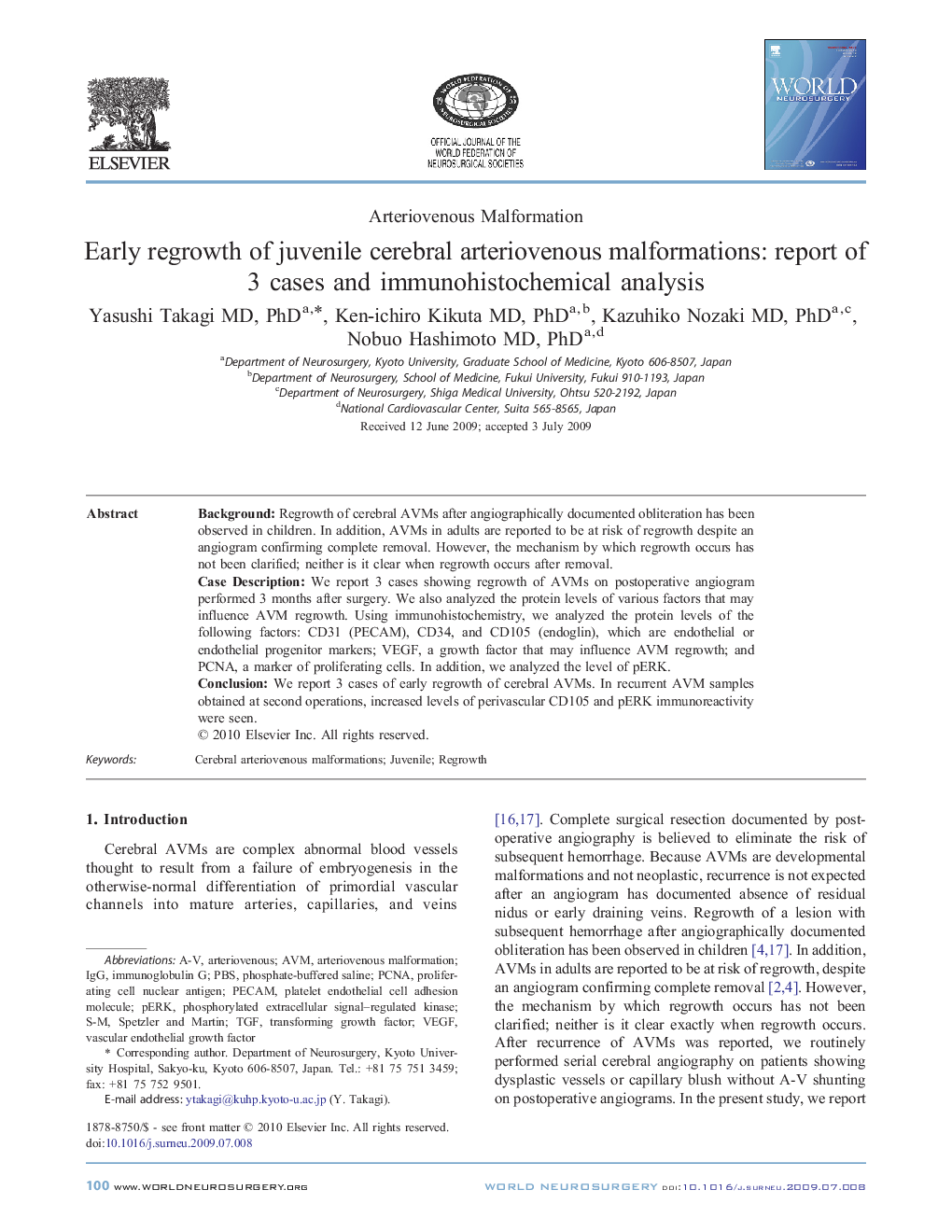| Article ID | Journal | Published Year | Pages | File Type |
|---|---|---|---|---|
| 3096221 | World Neurosurgery | 2010 | 8 Pages |
BackgroundRegrowth of cerebral AVMs after angiographically documented obliteration has been observed in children. In addition, AVMs in adults are reported to be at risk of regrowth despite an angiogram confirming complete removal. However, the mechanism by which regrowth occurs has not been clarified; neither is it clear when regrowth occurs after removal.Case DescriptionWe report 3 cases showing regrowth of AVMs on postoperative angiogram performed 3 months after surgery. We also analyzed the protein levels of various factors that may influence AVM regrowth. Using immunohistochemistry, we analyzed the protein levels of the following factors: CD31 (PECAM), CD34, and CD105 (endoglin), which are endothelial or endothelial progenitor markers; VEGF, a growth factor that may influence AVM regrowth; and PCNA, a marker of proliferating cells. In addition, we analyzed the level of pERK.ConclusionWe report 3 cases of early regrowth of cerebral AVMs. In recurrent AVM samples obtained at second operations, increased levels of perivascular CD105 and pERK immunoreactivity were seen.
